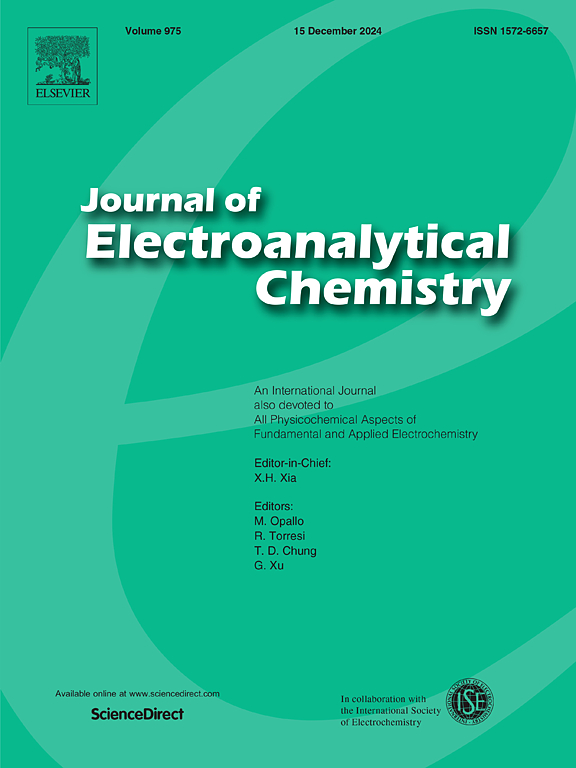超稳定高性能水性锌离子电池用掺杂Cu的VO2正极材料
IF 4.1
3区 化学
Q1 CHEMISTRY, ANALYTICAL
引用次数: 0
摘要
钒基材料被认为是最有前途的水性锌离子电池正极材料。遗憾的是,钒基材料材料与锌离子之间存在静电力,其本征电导率差,结构不稳定,进一步阻碍了钒基材料的发展。因此,通过在隧道中掺杂Cu,制备了层状纳米花结构的Cu0.05VO2阴极材料,以提高其导电性,减弱其与锌离子之间的静电斥力。Cu0.05VO2阴极在0.5 a g−1下可提供高达416 mAh g−1的高容量,在10 a g−1下循环6000次后保持95.4%的容量保持率。实验和理论计算表明,在Cu0.05VO2中,导电率和锌离子输运率都得到了极大的提高。因此,Cu0.05VO2正极材料显示出在azib中使用的潜力。本文章由计算机程序翻译,如有差异,请以英文原文为准。
Cu doped VO2 cathode materials for ultra-stable and high-performance aqueous zinc-ion batteries
Vanadium-based materials are considered to be the most promising cathode materials for aqueous zinc-ion batteries. Unfortunately, the existence of electrostatic forces between vanadium-based materials materials and zinc ions, as well as their poor intrinsic electrical conductivity and unstable structure, have further hindered the development of vanadium-based materials. Hence, a lamellar nanoflower-structured Cu0.05VO2 cathode material is prepared by Cu doped VO2 in the tunnel to improve its electrical conductivity and weaken the electrostatic repulsion force between it and zinc ions. The Cu0.05VO2 cathode can deliver a high capacity of up to 416 mAh g−1 at 0.5 A g−1 and maintain a capacity retention rate of 95.4 % after 6000 cycles at 10 A g−1. Experimental and theoretical calculations show that both the electrical conductivity and the zinc ion transport rate are greatly enhanced in Cu0.05VO2. Therefore, the Cu0.05VO2 cathode material shows potential for use in AZIBs.
求助全文
通过发布文献求助,成功后即可免费获取论文全文。
去求助
来源期刊
CiteScore
7.80
自引率
6.70%
发文量
912
审稿时长
2.4 months
期刊介绍:
The Journal of Electroanalytical Chemistry is the foremost international journal devoted to the interdisciplinary subject of electrochemistry in all its aspects, theoretical as well as applied.
Electrochemistry is a wide ranging area that is in a state of continuous evolution. Rather than compiling a long list of topics covered by the Journal, the editors would like to draw particular attention to the key issues of novelty, topicality and quality. Papers should present new and interesting electrochemical science in a way that is accessible to the reader. The presentation and discussion should be at a level that is consistent with the international status of the Journal. Reports describing the application of well-established techniques to problems that are essentially technical will not be accepted. Similarly, papers that report observations but fail to provide adequate interpretation will be rejected by the Editors. Papers dealing with technical electrochemistry should be submitted to other specialist journals unless the authors can show that their work provides substantially new insights into electrochemical processes.

 求助内容:
求助内容: 应助结果提醒方式:
应助结果提醒方式:


